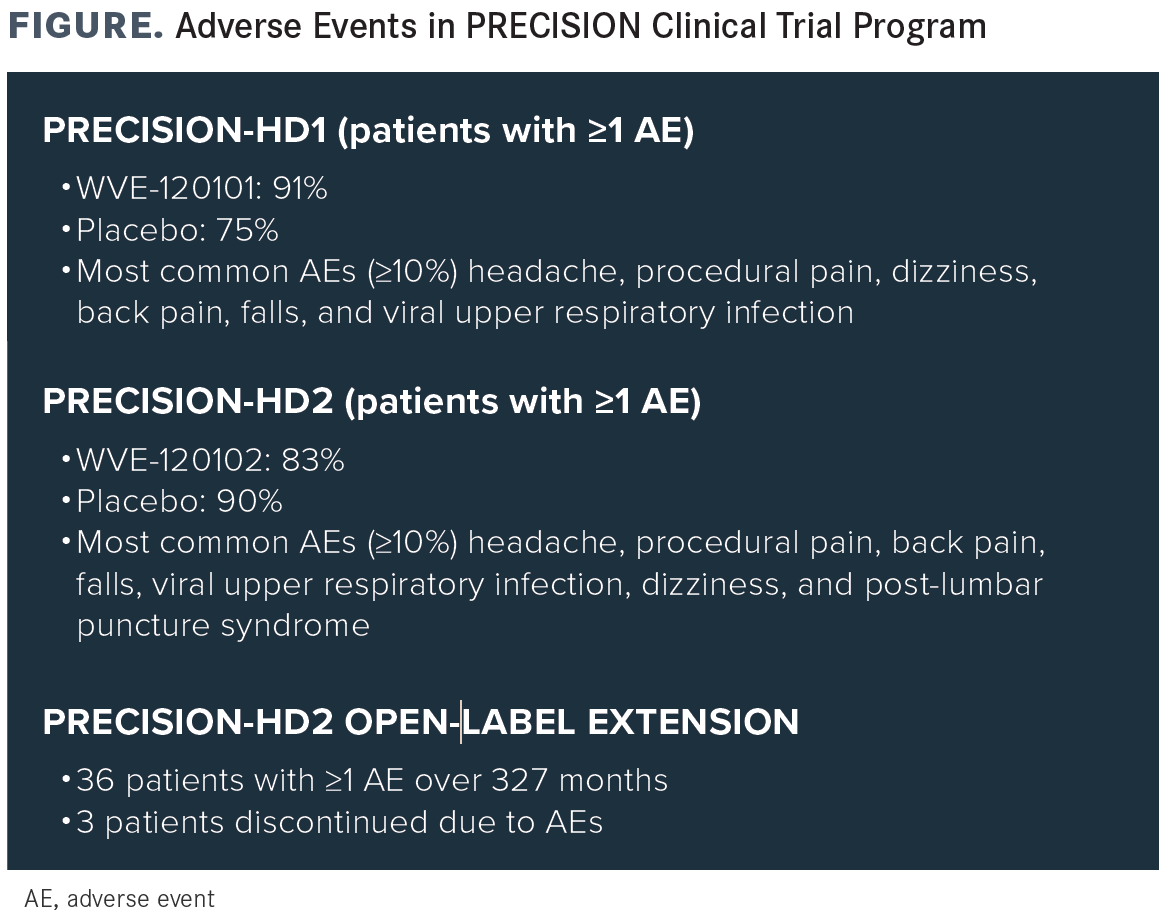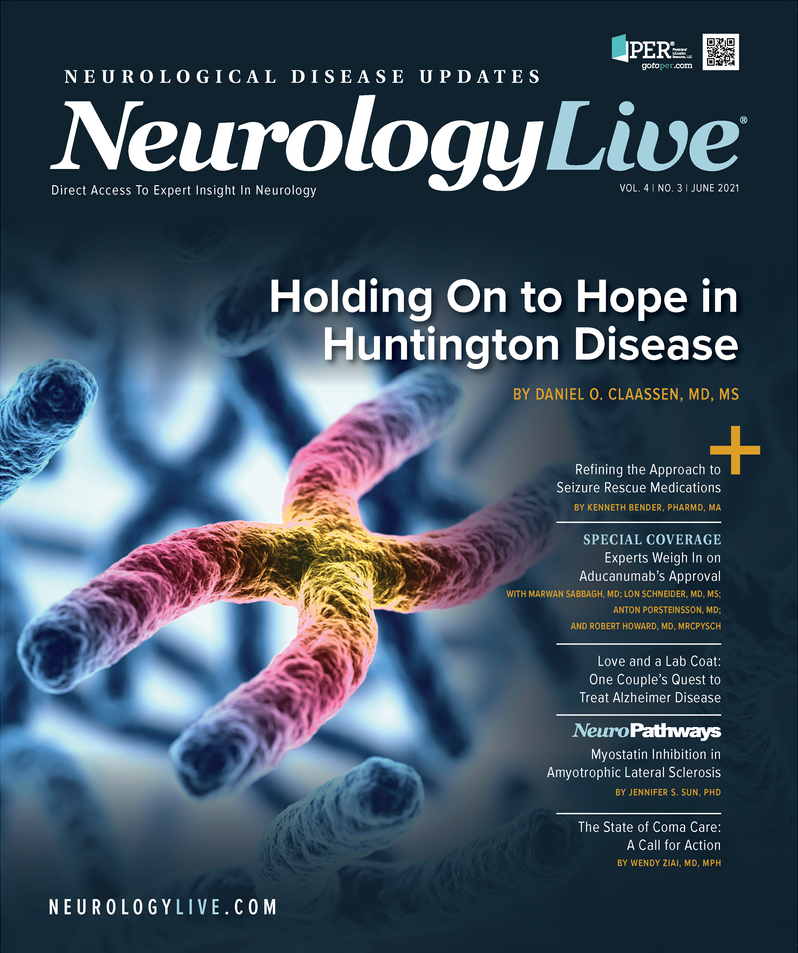Publication
Article
NeurologyLive
Holding On to Hope in Huntington Disease
Author(s):
Despite a few surprising program failures early this year, there is plenty of potential worth holding on to in the Huntington disease pipeline.
Daniel O. Claassen, MD, MS

THE DISAPPOINTING NEWS of 2 halted programs reverberated around the Huntington disease (HD) community in late March. Tominersen (Roche), WVE-120101, and WVE-120102 (both Wave Life Sciences) were proposed as antisense oligomer (ASO) treatments for HD patients. These treatments do not currently appear to be viable options for therapy, but for different reasons. It’s difficult to express the profound hype and the hope that accompanied these trials. ASO treatments appear promising for neurologic disease: Nusinersen (Spinraza; Biogen) was approved for the treatment of spinal muscular atrophy, and the videos of children who can now walk are miraculous to see. I was at a European HD program and when watching these videos, I remember a comment from the audience microphone: “Can we imagine a world where HD patients will have a treatment like this?”
Fast forward to 2021, and the mood is—flat.
GENERATION-HD (NCT03761849) was a massive undertaking. More than 800 HD patients were intrathecally dosed with tominersen in the phase 3 trial. The global scope of this trial, the speed at which it enrolled, and the effort to methodically follow the protocol were simply astonishing. Participants were dosed initially every 4 or 8 weeks, and later the schedule was amended to every 8 or 16 weeks. There was a lot of enthusiasm about this program, despite the sacrifice involved. The criteria ensured a motor manifest population, rather independent in activities of daily living (ADLs) and without substantial comorbidities.
Reflecting on this undertaking, many of my colleagues (including me) were somewhat nervous about committing to perform this many lumbar punctures (LPs), over such a long period of time. It was amazing how quickly we adapted to this reality. Some of us learned how to use ultrasound-guided LP techniques. We mobilized a diverse set of expertise (neurologists, anesthesiologists, and sometimes even radiologists) to ensure that the LPs and intrathecal delivery would go smoothly. Then there was the massive pressure on the sites when getting started. We received fraudulent phone calls from “interested” physicians who turned out to be nefarious schemers looking for insider trading information on what was in the informed consent, or when the trial was going to start, or what safety concerns could be uncovered. And of course, the phone calls from the families were almost nonstop. We were offered, “I will sell my house, move to Nashville, donate the proceeds of the house to the clinic, if you can get me into the ASO study.” VIPs of the hospital called demanding entry because they knew the provost or someone who was apparently important. This work fell on the coordinators. A clinical research team is only as strong as the sum of the coordinators. The massive effort to arrange complicated screening, MRI, blood work, LPs, drug delivery, dosing, postdosing assessments, overnight stays in the hospital—all of it rested on the shoulders of our coordinators. I have a renewed and sincere respect for our coordinators!
But back to the trial. Phase 1 data from tominersen showed clear reductions in mutant Huntington protein in a dose-dependent level. This nonselective allele approach would also theoretically reduce wild-type huntingtin (Htt) expression (remember, there are 2 alleles: a mutant expanded CAG-repeat and a wild-type allele). A total of 46 patients with early HD were enrolled into the phase 1/2 trial. Treatment with tominersen showed dose-dependent reductions of mHTT protein in the cerebrospinal fluid (CSF), with the greatest reductions recorded in the 2 highest-dose groups (90 mg: 42% reduction; 120 mg: 38% reduction).1 Several early concerns regarding elevation of neurofilament light chain and increased ventricular size were noted, but the treatment seemed to hit the target.
Perhaps we should have paid more attention to this issue? I remember a question from a young woman at the HDSA convention. She had read the New England Journal of Medicine phase 1 report. She asked, “Should I be worried about the safety of this medication?” The answer from the speaker was an emphatic no.
The Wave program was much earlier in phase, phase 1/2, and took a different approach, using a single nucleotide polymorphism (SNP)–targeted approach to reduce only the mutant Htt protein, leaving the wild-type protein alone. Side by side, the pros and cons of selective or nonselective approach appear to have encouraged a vigorous debate regarding the role of wild-type Htt in neurodevelopment, response to stress, and safety. Several recent reports have emphasized the potential deleterious effects of wild-type Htt reductions, but overall these programs have forced the field to consider what role, if any, wild-type Htt has in humans. This has been a welcome discussion in the field, and one that will continue long after these trials. It appears that Wave has developed a promising method to assess wild-type Htt, and we hope that Roche and others will test this method on their stored samples.
For the Wave program, PRECISION-HD2 (NCT03225846) and PRECISION-HD1 (NCT03225833), intrathecal dosing was every 4 weeks, with similar clinical criteria for inclusion, but these were a dose-finding and safety study, respectively (FIGURE). Although the treatments were well tolerated, the results from all participants (n = 88) in the PRECISION-HD2 core trial showed no evidence of a dose-response across the dose levels tested. As well, there was no statistically significant change in mutant Htt protein compared with placebo after single or multiple doses of WVE-120102, up to and including 32 mg monthly. The 16-mg dose of WVE-120101 being evaluated in PRECISION-HD1 (n = 51) yielded similar results, and thus Wave elected to halt clinical development.2
FIGURE. Adverse Events in PRECISION Clinical Trial Program

The end points of Roche’s GENERATION-HD deserve consideration. It is clear that regulatory agencies around the globe cannot agree what end point is considered useful for HD. The FDA allowed only the Total Functional Capacity (TFC) scale, a crude marker of ADLs in persons with HD. In Europe, a composite end point that includes objective motor (Unified Huntington Disease Rating scale), cognitive, and TFC measurements was accepted as a primary end point. It is fair to say that coming to a global agreement on end points is crucial for rare diseases. However, it’s easier to agree on an end point like COVID-19 infection, but harder for one like disease progression in a neurodegenerative disorder. It does not help patients to have bickering among countries on which end point to pursue. Hopefully, we will see regulatory bodies work in tandem, and not in opposition, for drug development. It’s a tall order, but it would make for better science and an assessment of treatments.
On the topic of end points, there is a movement in neurodegeneration to find better, reliable end points that are quantifiable and not subject to noise. The promotion of quantitative digital biomarkers appears to be a way forward. GENERATION-HD employed a secondary outcome measure assessing digital outcomes. As a global community, we would anticipate data from this study to be publicly available for use in developing better biomarkers of disease progression in HD. There is always tension with private companies collecting data, but allowing for algorithm development, hypothesis testing, and analytic approaches to this vast data set will only help the field.
Of course, one of the substantial questions in neurodegeneration is, when should we intervene? The field of HD needs measures that can identify the earliest symptoms of HD. Longitudinal studies in at-risk HD populations emphasize that the onset of motor symptoms in HD is preceded by decades of cognitive and behavioral symptoms. We typically measure working memory, processing speed, and impulsive behaviors, and see psychiatric symptoms in this premotor stage. However, these symptoms are highly variable and may be influenced by life stress and other environmental factors. Perhaps the use of “cold” cognitive functions, such as attention, working memory, and processing speed, fail to consider cognitive changes that are a response to reward, or emotional responses. What about neurodevelopment? Does HD impact this? If it does, we need new ideas on when to intervene and how to assess progression.
Where Do We Go From Here?
Given the potential issues with outcomes, treatment adverse effects, and patient inclusion, it is not fair to say we should abandon mutant Htt protein reductions. There is no reason, at present, to believe that the pathophysiologic progression of HD is not driven by mutant Htt protein expression. Undoubtedly, a deep dive into the data from GENERATION-HD will allow us to look at patient subtypes, clinical safety, variation in treatment responses, longitudinal clinical progression, and subanalysis on imaging, digital, and other secondary biomarkers. These will be important and help us move forward. For Wave, it appears that there are continued advances in the SNP–targeted therapy, with promise of an improved allele-specific ASO in development. This approach is touted to provide improved drug distribution and efficacy.
It is worth reminding the community of current and future studies in HD. UniQure is testing the hypothesis that AAV-mediated gene therapy can reduce mutant Htt and is currently in the midst of a phase 1 sham-controlled study. Several other companies, including Voyager and Spark, are pursuing similar approaches. These are invasive treatments, requiring surgical delivery of the AAV virus to the striatum. There are a number of potential impediments to scalability of this method, but the potential benefit of direct-to-striatum delivery appears promising.
Aside from these studies, there are others of interest. One of the more compelling ideas is the concept of somatic instability in HD (increasing CAG repeat number over time). This is now an important treatment target, and companies like Triplet Therapeutics are pursuing therapies that may stabilize this instability. Oral medications offer an important convenience for patients. Here, novel approaches including RNA splicing (PTC Therapeutics) and repurposing of branaplam (Novartis) are in early stages of development. These offer additional opportunities to assess how reductions in mutant Htt will potentially alter the disease course in HD. There are so many diverse approaches to HD, it is honestly hard to keep track. There will undoubtedly be more negative studies, more setbacks, more frustration, but overall, it seems that the clinical research opportunities are vast.
Offering Hope for Our Patients
Soon after we heard the news about GENERATION-HD, we called all our patients in the trial. It was hard to tell them that the trial was stopped. We later learned during the CHDI convention that patients dosed seemed to have worsening cognitive status and greater ventricular size. The sum of these setbacks was much grief, frustration, and disappointment. The dread of a failed trial has left many of us searching for what gives us hope and how we communicate this with our patients. Our team was reminded by a very savvy pediatric neurologist we work with, in a quote from an opinion piece, also published in the New England Journal of Medicine. In this commentary, the author reflects on where patients find hope and how to give difficult news. “This breadth of hopes, ranging from the miraculous to the mundane, reveals the internal architecture of hope—a framework, complete with ceiling, floor, and diverse supporting pillars.”3
We have changed the way we talk about clinical trials. Yes, they are important. Yes, getting into trials can be extremely encouraging for patients and families. But trials are not the only source of our hope or the only source of vitality. Our HD families have reminded us that our hope is not necessarily in the immediate promise of disease-modifying treatments, but in things like family, faith, and the support of the HD community. I always find that my HD patients remind me of what is important, and they exemplify resilience in the face of adversity.
About a year before these trials started, my team spent a wonderful night watching a documentary, Why She Smiles, about a young woman who was adopted, and her journey to a diagnosis of HD. There are many films about HD, but this movie hit home as I observed the physical symptoms, grief, emotional turmoil, and altered family dynamics that come with a diagnosis of HD. The directors were students of a local university, and I wrote them a brief note a couple days later. These words seem to ring true now.
"The story you tell is the contemporary answer to Thornton Wilder’s, Our Town, where towards the end of that play, it is said, ‘That’s what it was to be alive.…To spend and waste time as though you had a million years. To be always at the mercy of one self-centered passion, or another.’
Why She Smiles “offers another perspective. Life doesn’t need to be this way. We can embrace the bone-jarring, tear-filled moments, smiling with a loving kindness—not of this world.”
I think many of us in the HD community feel this way. We will continue to serve this population with steadfast resolve.
REFERENCES
1. Roche provides update on tominersen programme in manifest Huntington’s disease. News release. Roche. March 22, 2021. Accessed May 18, 2021. https://www.roche.com/media/releases/med-cor- 2021-03-22b.htm
2. Wave Life Sciences provides update on phase 1b/2a PRECISION-HD trials. News release. Wave Life Sciences USA, Inc. March 29, 2021. Accessed May 18, 2021. https://finance.yahoo.com/news/wave-life-sciences-provides-phase-200500861.html
3. Feudtner C. The breadth of hopes. N Engl J Med. 2009;361(24):2306-2307. doi:10.1056/ NEJMp0906516

Newsletter
Keep your finger on the pulse of neurology—subscribe to NeurologyLive for expert interviews, new data, and breakthrough treatment updates.




